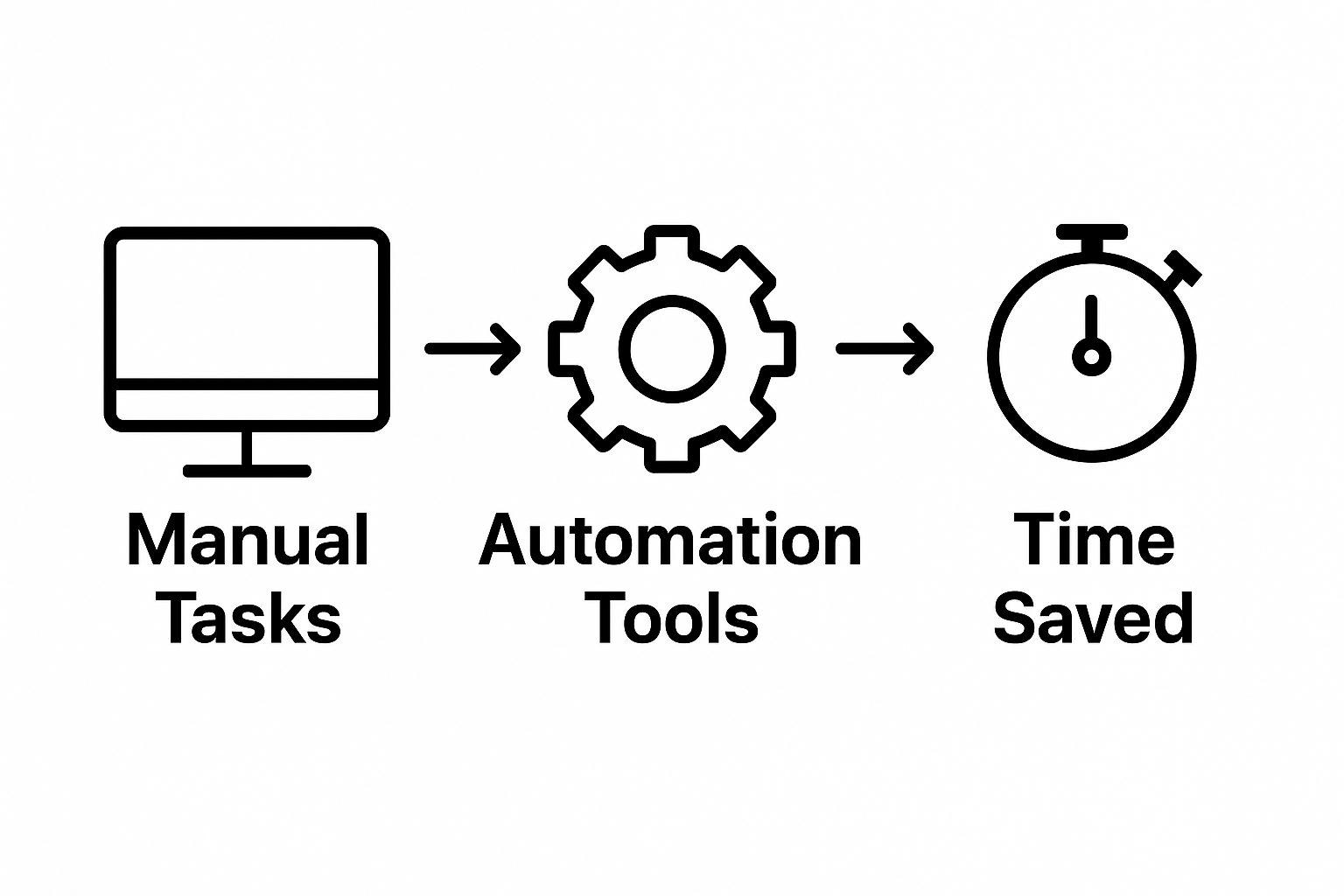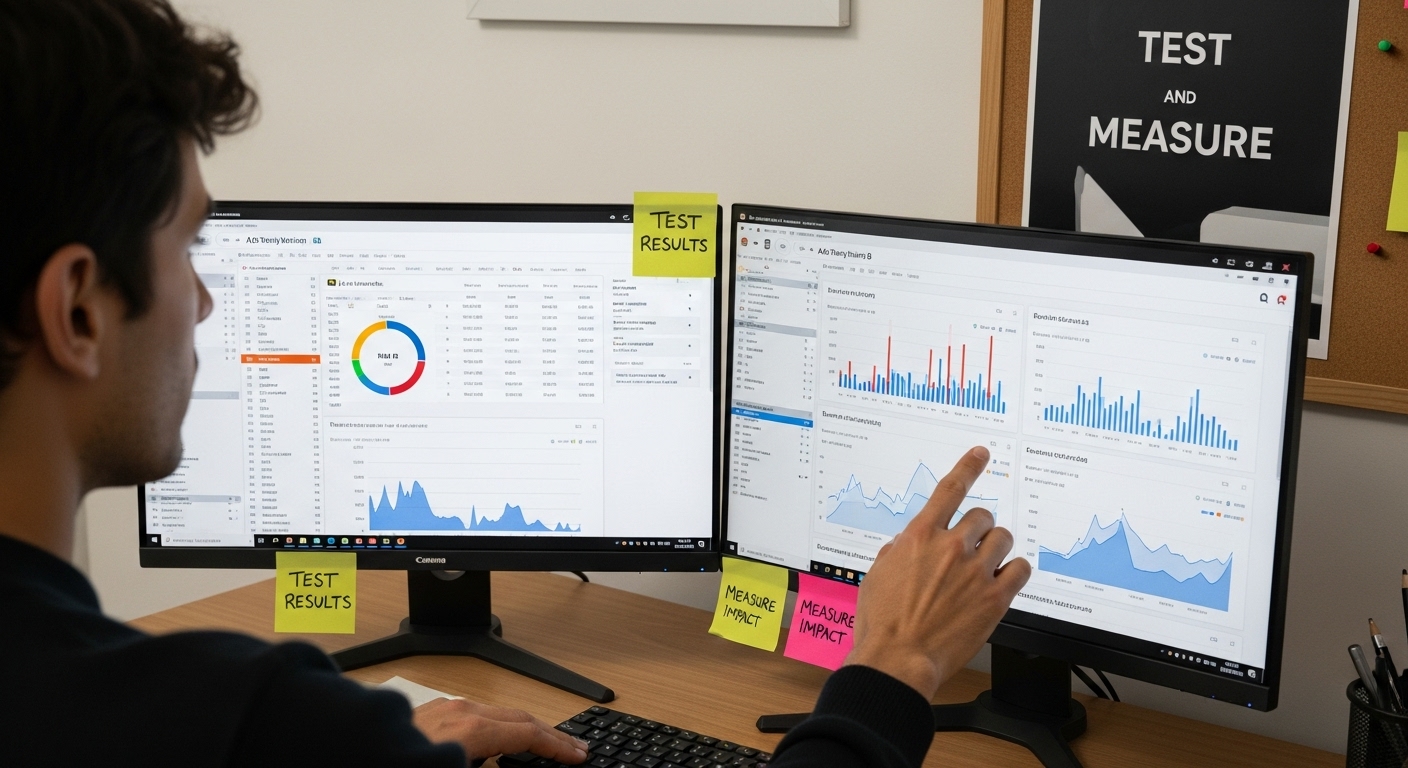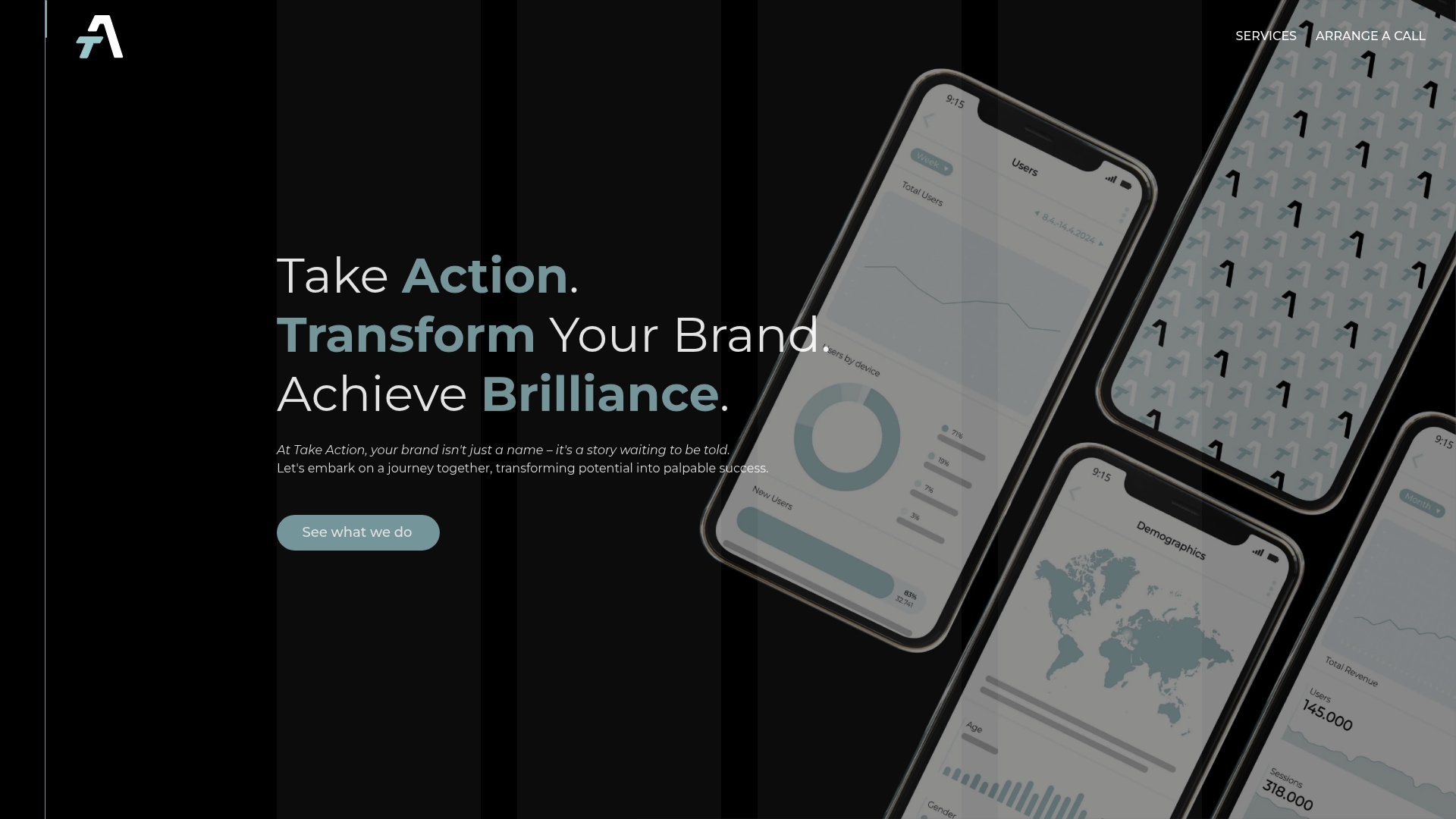Scaling Digital Marketing: Strategies for 2025 Success
Scaling your digital marketing can feel overwhelming. There are new platforms, endless metrics, and evolving strategies that all compete for your attention. Yet, most businesses jump straight into new tactics and miss the game-changing starting line. Only one in four companies conducts a deep diagnostic evaluation of their current digital marketing performance before scaling. This single oversight often determines if your scaling efforts soar or stumble.
Table of Contents
- Step 1: Analyze Your Current Digital Marketing Performance
- Step 2: Define Clear Goals For Your Scaling Strategy
- Step 3: Optimize Your Marketing Channels For Efficiency
- Step 4: Implement Automation Tools For Consistency
- Step 5: Test And Measure Your Campaign Results
- Step 6: Adjust Strategies Based On Data Insights
Quick Summary
| Key Point | Explanation |
|---|---|
| 1. Analyze Current Performance Thoroughly | Gather detailed metrics from all digital marketing channels to identify strengths, weaknesses, and opportunities for growth. |
| 2. Set SMART Goals for Scaling | Establish specific, measurable, achievable, relevant, and time-bound objectives based on performance analysis to directly address identified gaps. |
| 3. Optimize Marketing Channels for Efficiency | Conduct detailed performance audits to prioritize resource allocation to high-performing channels and improve overall marketing effectiveness. |
| 4. Implement Automation for Consistency | Use automation tools to streamline repetitive processes, allowing your team to focus on strategy and creative development. |
| 5. Test Campaigns and Measure Results | Implement A/B testing to uncover actionable insights that drive marketing improvements and align with your scaling goals. |
Step 1: Analyze Your Current Digital Marketing Performance
Scaling digital marketing requires a comprehensive assessment of your current performance landscape. Before implementing any new strategies, you need a crystal clear understanding of where your marketing efforts currently stand. This critical first step involves conducting a thorough diagnostic evaluation that reveals your strengths, weaknesses, and untapped opportunities.
Start by gathering comprehensive data across all your digital marketing channels. Pull performance metrics from your email marketing platforms, social media analytics, website traffic reports, and advertising dashboards. Look beyond surface level numbers and dig deep into engagement rates, conversion metrics, customer acquisition costs, and return on investment for each channel. Key indicators like click through rates, bounce rates, average session duration, and customer lifetime value will provide a holistic view of your current marketing effectiveness.
Utilize professional analytics tools to streamline this process. Learn more about advanced marketing performance tracking to ensure you capture nuanced insights. Google Analytics, Klaviyo reporting features, and platform specific analytics can help you compile a comprehensive performance snapshot. Pay special attention to:
- Conversion rates across different marketing channels
- Customer segmentation and engagement metrics
- Revenue generated per marketing campaign
- Customer acquisition and retention costs
During this analysis, identify patterns and anomalies in your current marketing performance. Some channels might be significantly outperforming others, while some campaigns could be underdelivering. This diagnostic step isn’t about criticism but strategic optimization. Your goal is to understand the current state of your digital marketing ecosystem and create a data driven roadmap for scaling your efforts.
Below is an overview table summarizing each main step in scaling your digital marketing, including the core focus and key outcomes from the article.
| Step | Focus | Key Outcome |
|---|---|---|
| 1. Analyze Current Performance | Assess metrics across channels | Identify strengths, weaknesses, and growth opportunities |
| 2. Define Clear Goals | Set SMART objectives | Establish measurable and aligned scaling targets |
| 3. Optimize Channels | Audit and refine channels | Improve resource allocation and effectiveness |
| 4. Implement Automation Tools | Automate repetitive processes | Increase consistency and free up strategic capacity |
| 5. Test and Measure | Conduct A/B and multivariate testing | Generate actionable insights from performance results |
| 6. Adjust Strategies | Pivot based on data insights | Continuously refine approach for scalable growth |
Verify the completeness of your analysis by ensuring you have granular insights into each marketing channel. A successful performance review reveals not just what is happening, but why certain strategies are working or falling short. Document your findings meticulously, creating a baseline report that will serve as your strategic reference point for future scaling initiatives.
Here is a checklist table to help verify the completeness of your marketing performance analysis based on the recommended criteria in the article.
| Verification Item | Description |
|---|---|
| Granular channel insights | Collect detailed data for each marketing channel |
| Engagement & conversion metrics | Analyze click rates, bounce rates, and conversions |
| Customer acquisition & retention costs | Review spend and value for acquiring and keeping customers |
| Revenue per campaign | Evaluate how much revenue each campaign generates |
| Pattern and anomaly detection | Identify trends and underperforming elements |
| Baseline report created | Document findings as a reference for scaling |
| Analysis explains why outcomes occur | Go beyond “what” to understand the causes |
Step 2: Define Clear Goals for Your Scaling Strategy
Defining clear goals is the strategic compass that will guide your digital marketing scaling efforts. After analyzing your current performance, you need to transform those insights into actionable, measurable objectives that align with your broader business vision. Scaling digital marketing is not about random growth, but purposeful, strategic expansion.
Begin by establishing SMART goals - Specific, Measurable, Achievable, Relevant, and Time bound objectives that translate your performance analysis into concrete targets. These goals should directly address the gaps and opportunities uncovered in your initial performance review. For instance, if your analysis revealed low email engagement rates, a SMART goal might be increasing email conversion rates by 25% within the next quarter through targeted segmentation and personalized content strategies.
Explore advanced strategies for business growth to help refine your goal setting process. Your scaling goals should encompass multiple dimensions of digital marketing performance:
- Revenue generation targets
- Customer acquisition metrics
- Engagement and retention rates
- Cost efficiency improvements
- Brand awareness expansion
Consider the interconnected nature of your digital marketing ecosystem when setting these goals. Each objective should support and amplify others, creating a holistic approach to scaling. For example, improving email personalization can simultaneously boost conversion rates, reduce customer acquisition costs, and enhance overall brand perception.
As you define your goals, build in flexibility and regular review mechanisms. The digital marketing landscape evolves rapidly, and your scaling strategy must be adaptable. Implement quarterly goal review sessions to assess progress, recalibrate targets, and ensure your strategy remains aligned with emerging market trends and technological advancements. Your goals are not set in stone but living, breathing strategic guidelines that will dynamically guide your digital marketing growth.
Step 3: Optimize Your Marketing Channels for Efficiency
Optimizing your marketing channels is the critical bridge between understanding your current performance and achieving scalable growth. Efficiency is not about doing more, but about strategically focusing your resources where they generate maximum impact. This step requires a surgical approach to evaluating and refining each digital marketing channel in your arsenal.
Begin by conducting a detailed performance audit for each marketing channel. Analyze the return on investment, engagement metrics, and conversion rates across email, social media, paid advertising, content marketing, and other digital platforms. Look beyond surface level numbers and understand the nuanced performance indicators that reveal true channel effectiveness. Some channels might appear successful but consume disproportionate resources, while others might have untapped potential waiting to be unleashed.
Explore cutting edge influencer marketing strategies to expand your marketing channel optimization approach. Prioritize channels that demonstrate consistent performance and alignment with your defined scaling goals. This might mean reallocating budget from underperforming platforms to those showing more promising engagement and conversion metrics.
Implement advanced marketing automation tools to streamline channel management and reduce manual overhead. Platforms like Klaviyo offer sophisticated segmentation and personalization features that can dramatically improve marketing efficiency. Automate repetitive tasks, create intelligent customer journeys, and develop dynamic content strategies that adapt in real time.
Your optimization strategy should include:
- Consolidating marketing tech stack
- Implementing cross channel tracking
- Developing integrated communication workflows
- Creating personalized customer experience sequences
- Establishing clear performance benchmarks
Verify your channel optimization by tracking key performance indicators before and after implementation. A successful optimization process will result in improved resource allocation, higher engagement rates, and more predictable marketing outcomes. Remember, optimization is an ongoing process that requires continuous monitoring, testing, and refinement to maintain your competitive edge in the rapidly evolving digital marketing landscape.
Step 4: Implement Automation Tools for Consistency
Implementing automation tools transforms your digital marketing from a manual, time consuming process into a streamlined, intelligent system. Automation is the secret weapon for scaling marketing efforts without exponentially increasing your team’s workload. By strategically integrating sophisticated tools, you create a robust infrastructure that delivers consistent, personalized experiences across multiple customer touchpoints.
Start by mapping out your current marketing workflows and identifying repetitive tasks that consume significant human resources. Email sequences, customer segmentation, abandoned cart recovery, and post purchase follow ups are prime candidates for automation.
 Platforms like Klaviyo excel at creating intelligent, behavior triggered communication flows that adapt dynamically to individual customer interactions.
Platforms like Klaviyo excel at creating intelligent, behavior triggered communication flows that adapt dynamically to individual customer interactions.
Discover advanced time management strategies to complement your automation implementation. Focus on tools that offer deep integration capabilities, allowing seamless communication between your email marketing, customer relationship management, advertising platforms, and analytics systems. The goal is creating a unified ecosystem where data flows effortlessly, enabling real time personalization and rapid response to customer behaviors.
Carefully evaluate automation tools based on their ability to:
- Provide granular customer segmentation
- Generate predictive analytics
- Support complex, multi step communication workflows
- Integrate with existing marketing technology stack
- Offer robust reporting and performance tracking
Successful automation requires a nuanced approach that balances technological capability with human creativity. While automation handles repetitive tasks, your team can focus on strategic planning, creative content development, and high level customer relationship management. Implement a phased rollout of automation tools, starting with one or two critical workflows and gradually expanding as your team becomes more comfortable with the technology.
Verify your automation implementation by tracking key performance indicators like time saved, increased conversion rates, and improved customer engagement metrics. A well designed automation strategy should demonstrate measurable improvements in marketing efficiency and customer experience within the first 60 to 90 days of implementation.
Step 5: Test and Measure Your Campaign Results
Testing and measuring campaign results is the critical diagnostic process that transforms raw data into actionable strategic insights. Your marketing performance is only as good as your ability to understand, interpret, and act on the metrics that truly matter. This step moves beyond surface level analytics to uncover the nuanced performance indicators that drive meaningful business growth.
Initiate a comprehensive testing strategy by implementing A/B testing across multiple marketing channels. Develop controlled experiments that systematically compare different variables such as email subject lines, ad creative, landing page designs, and audience segmentation strategies. Each test should have a clear hypothesis, measurable objectives, and statistically significant sample sizes to ensure reliable results. Utilize tools like Google Analytics, Klaviyo split testing features, and advanced marketing analytics platforms to track and quantify performance differences.
Explore our latest email marketing insights to deepen your understanding of testing methodologies. Focus on key performance indicators that directly align with your previously established scaling goals. These might include conversion rates, customer acquisition costs, average order value, email engagement metrics, and customer lifetime value. Remember that true measurement is not about isolated data points, but about understanding the interconnected story these metrics tell about your marketing performance.
Your testing and measurement framework should encompass:
- Establishing baseline performance metrics
- Creating statistically valid experimental designs
- Implementing multi variant testing strategies
- Developing real time performance dashboards
- Establishing clear performance thresholds
Develop a systematic approach to interpreting test results. Look beyond simple win lose scenarios and seek to understand the underlying customer behaviors and preferences driving your performance metrics. Successful marketers view each test as a learning opportunity, using insights to continuously refine and optimize their marketing strategies. Create a structured feedback loop where test results directly inform future campaign design, audience targeting, and messaging approaches.
Verify the effectiveness of your testing process by demonstrating consistent improvements in key performance indicators. A robust testing and measurement strategy should show measurable gains in marketing efficiency, customer engagement, and overall business performance within 90 to 120 days of implementation.

Step 6: Adjust Strategies Based on Data Insights
Adjusting strategies based on data insights is the pivotal moment where your marketing intelligence transforms from passive observation to active optimization. Successful scaling is not about rigidly adhering to initial plans, but about creating a dynamic, responsive marketing ecosystem that evolves with your performance data. This step requires a disciplined yet flexible approach to interpreting and acting on the insights generated from your testing and measurement efforts.
Begin by conducting a comprehensive review of your testing results, looking beyond surface level metrics to understand the deeper narrative of customer behavior. Analyze not just what happened, but why it happened. Examine the correlations between different marketing variables, customer segments, and performance outcomes. Use advanced analytics tools that offer predictive modeling and machine learning capabilities to uncover nuanced patterns that might not be immediately apparent through traditional reporting methods.
Explore advanced marketing strategy techniques to enhance your approach to strategic adjustments. Develop a systematic framework for translating data insights into actionable strategy modifications. This might involve recalibrating audience targeting, redesigning customer journey workflows, reallocating marketing budgets, or completely reimagining messaging and creative approaches based on the most compelling performance data.
Your strategic adjustment process should include:
- Establishing clear thresholds for performance triggers
- Creating rapid response protocols for significant data shifts
- Developing flexible budget allocation mechanisms
- Implementing continuous learning feedback loops
- Building cross functional communication channels
The most effective marketing strategies are those that can pivot quickly and intelligently in response to emerging data. Treat your marketing approach as a living, breathing system that requires constant nurturing and refinement. This means being willing to make bold changes when the data suggests a new direction, while also maintaining a consistent overarching strategic vision.
Verify the effectiveness of your strategic adjustments by tracking key performance indicators over subsequent marketing cycles. Look for consistent improvements in customer engagement, conversion rates, and overall marketing efficiency. A successful adjustment strategy should demonstrate a clear trajectory of performance enhancement, with each iteration bringing you closer to your ultimate scaling objectives.
Ready to Turn Data Into Scalable Growth?
You have spent time analyzing every detail of your marketing performance and set smart goals toward real growth. You know how critical it is to optimize every channel, automate routines, and measure what actually moves the needle. Yet turning all those insights into real revenue can feel overwhelming—especially if you want to increase retention, boost conversions, and truly scale without adding endless manual work.

Now is the time to act. Let Take Action help you transform your marketing plan into scalable results. Our expert team will set up automation, manage strategic campaigns, and use deep data insights to drive more email engagement and customer retention. Discover how our email automation services and proven strategies can put your brand on a path to measurable growth. Book your strategy session today. Get ahead of your competitors and start scaling before 2025 arrives.
Frequently Asked Questions
What are the first steps to scaling digital marketing?
Analyzing your current digital marketing performance is essential. Gather data across channels, evaluate key metrics, and identify strengths, weaknesses, and opportunities before implementing new strategies.
How do I define clear goals for my digital marketing strategy?
Use the SMART framework—Specific, Measurable, Achievable, Relevant, and Time-bound—to set actionable and measurable objectives based on your performance analysis, ensuring they align with your business vision.
What role does optimization play in scaling digital marketing?
Optimization increases efficiency by refining your marketing channels based on performance metrics. It focuses resources on high-impact channels and involves reallocating budgets and improving workflows for better results.
How can automation tools enhance my digital marketing efforts?
Automation tools streamline repetitive tasks, allowing for consistent and personalized customer interactions. They help improve efficiency, enabling your team to focus on strategic planning and creative content development.
